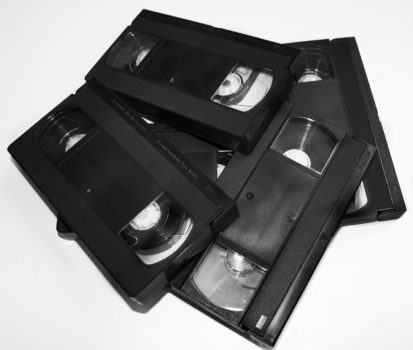VOD Needs Robust Pricing Solutions at Scale: Q&A with Adam Boast, CEO, Videoflare
by Lindsay Rowntree on 22nd Apr 2016 in News

The video market is still set to grow at a rapid pace across devices for the foreseeable future. But as demand outstrips supply, is the subject of pricing being ignored and are new opportunities being missed? Adam Boast (pictured below), CEO, Videoflare, believes that to be the case.
Exchangewire: Given the popularity of video on most marketers’ media plans, surely price isn’t a barrier to entry?
Adam Boast: For many advertisers and their agencies, pre-roll VOD is a great opportunity to compliment TV activity and also find new, harder to reach audiences. TV is priced with a level of sophistication that pre-roll VOD simply does not match. TV caters for a broad range of advertisers looking for different audiences and dayparts. Not everyone wants that first-in-break spot in Coronation Street or News at Ten. There is a large slice of the TV market that caters to the daytime TV audience, which tends to be priced more competitively. These daytime TV rates are not replicated online currently, as supply struggles to meet demand for the more premium priced budgets. Suppliers have not needed to address pricing to attract new spenders in the market.
Surely there are a plethora of new formats that have allowed the video market to flourish and bring new inventory into this space?
Yes, I agree. The rise in popularity of outstream and native formats has allowed publishers, who were struggling to grow organic click-to-play VOD inventory, to open up newer audiences without the expense of creating more video content. However, although these formats are priced slightly lower than click-to-play VOD, they are still three times more expensive than daytime TV.
So, why do daytime TV spenders need a VOD solution?
 Apart from the obvious advantages that VOD represents, accountability, point of sale potential, and user interaction, TV is getting gradually more expensive; and these advertisers are looking for alternative, more cost-effective routes to market. There is also an issue around time length of the creative. Often, daytime TV, including DRTV ads, have creatives that are longer than the ≤ 30” accepted by most online VOD pre-roll vendors, so they also have limited places to buy inventory online.
Apart from the obvious advantages that VOD represents, accountability, point of sale potential, and user interaction, TV is getting gradually more expensive; and these advertisers are looking for alternative, more cost-effective routes to market. There is also an issue around time length of the creative. Often, daytime TV, including DRTV ads, have creatives that are longer than the ≤ 30” accepted by most online VOD pre-roll vendors, so they also have limited places to buy inventory online.
How does time length affect pricing?
Again, this is a complexity in TV that is rarely emulated in click-to-play VOD outside some of the catchup TV services. In TV pricing is done on an industry standard pro-rata. For example, a 10 sec ad is 50% of the value of a 30 sec ad, a 60 sec ad is valued at two times 30 sec, and so on. If advertisers can distribute their longer creatives effectively online they can take advantage of the current pricing status quo.
So, there is a need for lower CPM offerings in the market. But isn’t ‘cheap’ inventory plagued with fraud and lack of quality?
Yes, I would recommend anyone stepping into this space to tread carefully. If you are buying inventory via a third-party on a top branded site, ask yourself whether it is real. We recommend working closely with auditors such as IAS, Doubly Verify, Forensiq, and MOAT. Videoflare works directly with our publisher partners to make sure all inventory is bot-free and optimised towards viewability. These direct connections mean that we can offer publishers better inventory yield, while offering advertisers daytime TV rates at scale.
The market seems to have accepted autoplay as Facebook and Twitter have stepped into the market. Is this giving advertisers more choice?
Undoubtedly, the introduction of autoplay video in the social space has flooded the market with new inventory. However, minimum budget level requirements are out of reach for many brands. Also the CPM, CPCV, CPV pricing models still don’t offer anything different with regards pricing.
Finally, do you see any future developments that will see a step change in spend and new advertisers in the market?
There is still much to be done. If only 10% of current broadcast spend moves into the VOD market it will double the market size. To do that we need to make sure we have robust pricing solutions at scale that work for all potential spenders. Outside of the Catch-up TV, Google, and Facebook walled gardens, there is a wealth of opportunity. Tech developments in tagging alone will see less latency, better accountability metrics, and more spend as VPAID Flash gives way to HTML5 and VAST 4.0 adoption. Subsequently, as new formats take hold and mature, they will find their rightful place within agency structures and planning processes.








Follow ExchangeWire